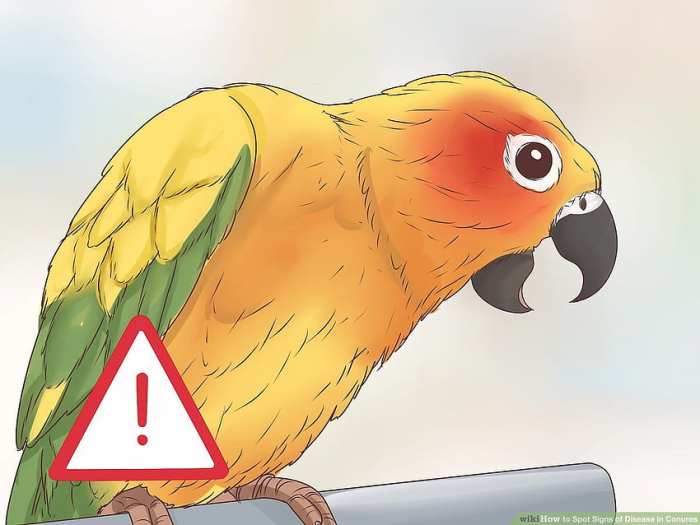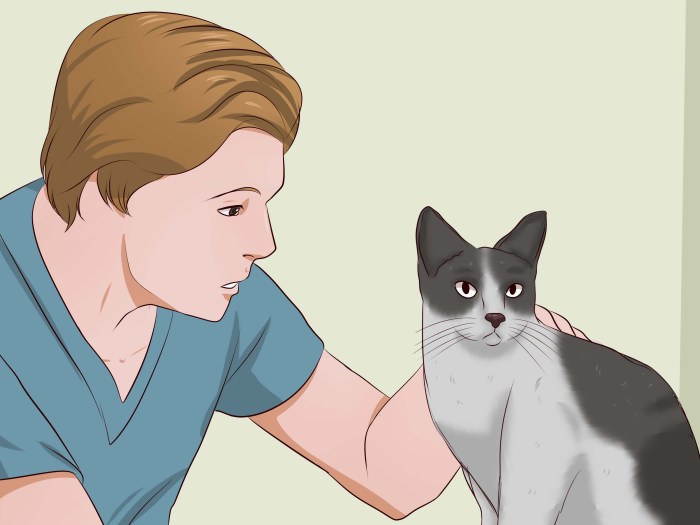Train a Hamster Not to Bite is crucial for a happy and harmonious relationship with your furry friend. This comprehensive guide delves into hamster behavior, training methods, environmental enrichment, and handling techniques to help you understand and address biting issues. Learning to prevent and correct biting behavior is key to ensuring a positive experience for both you and your hamster.
Understanding hamster behavior, including common biting triggers and signs of stress, is the first step. This guide provides detailed information on various hamster breeds and their typical temperaments, allowing you to tailor your approach to your specific pet. We’ll explore the nuances of positive reinforcement, desensitization, and counter-conditioning techniques, offering practical strategies to effectively train your hamster.
Understanding Hamster Behavior
Hamsters, despite their small size, possess a complex range of behaviors, some of which can be challenging for owners to interpret. Understanding these behaviors, particularly those related to biting, is crucial for creating a positive and harmonious relationship with your pet. This section will delve into the common behaviors of hamsters, including biting, its potential causes, and ways to address them.A deep understanding of hamster behavior allows for proactive measures to prevent and address potential issues, fostering a stronger bond between owner and pet.
This knowledge equips owners with the tools to understand their hamster’s needs and provide an environment that promotes well-being.
Common Hamster Behaviors
Hamsters exhibit a wide array of behaviors, including foraging, burrowing, nesting, and social interactions (with other hamsters). These behaviors are instinctive and vital to their well-being. Understanding these natural behaviors helps to recognize when a hamster’s actions deviate from the norm, potentially signaling stress or other issues. For example, excessive grooming can be a sign of stress, while repetitive circling can indicate anxiety or boredom.
Potential Causes of Hamster Biting
Hamster biting, while often perceived as aggressive, is frequently a reaction to fear, stress, or a lack of appropriate stimulation. A common trigger for biting is a sudden movement or noise. Hamsters, being prey animals, have a heightened sensitivity to their surroundings. Unfamiliarity with their environment, unexpected noises, or sudden changes in routine can all induce fear and anxiety, leading to biting.
Poor environmental conditions such as cramped cages, inadequate bedding, or a lack of enrichment also contribute to stress and subsequent biting. Environmental enrichment, including chew toys, tunnels, and hiding places, can help reduce stress and provide opportunities for natural behaviors.
Types of Hamster Bites and Severity
Hamster bites can vary in severity, ranging from a minor nip to a more significant puncture wound. The force and duration of the bite will influence the extent of the injury. Minor bites typically cause localized redness and swelling, while more severe bites may lead to deeper wounds and potential infections. A hamster’s teeth are sharp and capable of causing pain, so prompt attention to any bite is crucial.
Signs of a Stressed Hamster
Recognizing the signs of a stressed hamster is essential for addressing the underlying cause and preventing further behavioral issues. Common signs include changes in eating habits, lethargy, aggression, and withdrawal. Changes in the hamster’s typical patterns of activity, such as reduced exploration or nesting, can also indicate stress. It’s important to monitor the hamster for any changes in its behavior to identify potential stressors and address them promptly.
Comparison of Hamster Breeds and Biting Tendencies
| Breed | Biting Tendencies | Temperament |
|---|---|---|
| Syrian Hamster | Generally less prone to biting when handled properly and provided with appropriate enrichment. | Generally docile and friendly when handled gently and accustomed to human interaction. |
| Dwarf Hamster (e.g., Campbell, Roborovski) | Generally more prone to biting due to their smaller size and heightened sensitivity. | More active and curious, but can also be more timid and reactive to sudden movements. |
| Roborovski Hamster | Known for their tendency to bite when feeling threatened or uncomfortable. | Small, active, and quick-moving. They are often described as having a high-energy personality and can be challenging to handle. |
This table provides a general overview and individual hamsters may exhibit variations in their behavior. Consistent positive interaction and a stimulating environment are crucial for minimizing biting tendencies in all hamster breeds.
Training Methods
Successfully training a hamster to avoid biting involves understanding its behavior and employing appropriate training techniques. Positive reinforcement is key, focusing on rewarding desired actions rather than punishing unwanted ones. This approach fosters a positive association with handling and interaction, ultimately reducing the likelihood of biting. Hamsters are intelligent creatures, and patience and consistency are crucial elements of the process.Effective training relies on understanding the specific triggers for biting behavior.
Training a hamster to stop biting can be tricky, but patience and consistency are key. It’s all about positive reinforcement, and avoiding any harsh or scary methods. Learning how to properly handle and interact with your hamster is crucial. Thankfully, there are some amazing resources out there like information on marnie stern for ash that discuss similar principles of building trust and understanding, which can be just as helpful for teaching your hamster not to bite.
Ultimately, positive reinforcement and a calm environment are essential for success in training any pet.
Are they related to fear, stress, or simply a natural response to being handled? Identifying these triggers will significantly impact the approach you take. Recognizing that each hamster is unique, with its own personality and sensitivities, is fundamental to developing a tailored training program. The methods described here are general guidelines, and adjustments may be needed based on your individual hamster’s characteristics.
Positive Reinforcement Techniques
Positive reinforcement focuses on rewarding desired behaviors. This strengthens the connection between the action and the positive outcome, making the desired behavior more likely to occur in the future. The reward should be immediately given after the desired behavior. Examples of rewards include treats, praise, or allowing access to a favorite toy.
- Treats: Offer small, high-value treats, like pieces of mealworms or small seeds, as soon as the hamster exhibits the desired behavior. Avoid using foods that are too sugary or could upset your hamster’s digestive system.
- Praise: A gentle verbal praise or a soft touch can also act as a positive reinforcement. Hamsters respond well to gentle touch and acknowledgment.
- Enrichment: Provide stimulating enrichment items, such as new toys or a larger play area, as rewards. This can be a powerful motivator for desired behaviors, as hamsters are naturally curious and enjoy exploring.
Rewarding Desired Behaviors
The effectiveness of rewards depends on several factors. Firstly, the reward must be appealing to the hamster. Secondly, the reward must be delivered immediately following the desired behavior. This creates a strong association between the action and the positive consequence. Finally, the reward must be consistent.
- Immediate Reinforcement: Timing is crucial. Delivering the reward immediately after the desired behavior creates a direct link in the hamster’s mind. For example, if the hamster stops biting when you approach its cage, reward it immediately with a treat.
- Varied Rewards: A varied approach to rewards keeps the hamster engaged and motivated. Alternating between treats, praise, and enrichment items can be more effective than relying on a single reward type.
- Consistency in Reward Delivery: Every time the hamster performs the desired behavior, consistently reward it. Inconsistency can confuse the hamster and weaken the training’s effectiveness.
Desensitization and Counter-Conditioning
Desensitization involves gradually exposing the hamster to stimuli that trigger the biting behavior, while counter-conditioning pairs these stimuli with positive experiences. This helps the hamster associate the stimulus with a positive feeling rather than fear or aggression.
- Gradual Exposure: Start by presenting the trigger stimulus for a very short period, and gradually increase the duration. If the hamster bites, calmly remove the stimulus and try again later. This gradual exposure helps the hamster get used to the trigger without overwhelming it.
- Positive Pairing: Pair the trigger stimulus with a positive experience, such as offering a treat or providing a favorite toy. This creates a positive association between the stimulus and a pleasurable outcome.
- Patience: Desensitization and counter-conditioning require patience. It may take several sessions to see results. Be prepared to adjust your approach based on your hamster’s reactions.
Consistency in Training
Consistency is essential in hamster training. Irregularity in the training process can confuse the hamster and hinder progress. Establishing a regular routine for interaction and training will greatly improve the hamster’s understanding of what is expected.
- Regular Training Sessions: Schedule short, regular training sessions to maintain focus and consistency.
- Consistent Approach: Ensure that all individuals interacting with the hamster use the same training techniques and approach. Inconsistency can confuse the hamster.
- Long-Term Commitment: Remember that training is an ongoing process. Consistency over time is key to establishing positive behaviors.
Step-by-Step Guide to Training a Hamster to Stop Biting
This guide Artikels a systematic approach to addressing biting behavior.
- Observation and Understanding: Carefully observe your hamster’s behavior and identify potential triggers for biting. This involves paying attention to the circumstances surrounding the biting incidents.
- Positive Reinforcement: Begin training sessions by rewarding any instances of calm behavior or gentle interaction. This could involve offering a treat or praise.
- Desensitization and Counter-Conditioning: Gradually introduce stimuli that might trigger biting behavior, pairing them with positive reinforcement.
- Consistency and Patience: Maintain consistent training sessions and be patient. It takes time for the hamster to learn and adjust.
- Environmental Enrichment: Ensure the hamster’s environment is stimulating and enriching to reduce stress and potential biting triggers.
Common Mistakes to Avoid
Several common mistakes can hinder the effectiveness of hamster training. Understanding these errors can help avoid setbacks.
- Punishment: Avoid punishment, as it can create fear and anxiety, potentially worsening the biting behavior. Punishment is ineffective and harmful for hamsters.
- Unrealistic Expectations: Hamsters are not dogs or cats; they have different learning styles and paces. Set realistic goals and be patient with the process.
- Ignoring Triggers: Addressing and managing potential triggers for biting behavior is crucial. This includes ensuring the hamster’s environment is safe and stimulating.
Environmental Enrichment
A stimulating environment plays a crucial role in a hamster’s well-being and can significantly reduce unwanted behaviors like biting. By providing a diverse and engaging space, you can redirect their energy and satisfy their natural instincts, fostering a calmer and more positive interaction. This enriched environment allows hamsters to express their natural behaviors, which can often be misinterpreted as aggression if their needs aren’t met.A properly enriched environment mimics a hamster’s natural habitat, encouraging natural behaviors and reducing stress-induced biting.
A bored hamster is more likely to exhibit undesirable behaviors like biting, whereas a stimulated hamster is more likely to engage in natural activities, decreasing the likelihood of biting.
Enrichment Items for Hamsters
Providing a variety of toys and activities is key to keeping hamsters mentally and physically stimulated. A diverse range of textures, sizes, and shapes of toys will cater to their curiosity and encourage exploration.
- Tunnels and Mazes: These provide opportunities for exploration, digging, and hiding. Complex tunnel systems, with multiple entrances and exits, can be especially stimulating. Consider different materials like cardboard, plastic, or even natural materials like bamboo or wood (always supervise to ensure safety). Hamsters enjoy the challenge of navigating these spaces and the sense of accomplishment it provides.
- Chew Toys: Hamsters have a strong need to chew. Providing appropriate chew toys made from safe materials (wood, cardboard, or hard plastic) allows them to satisfy this instinct without harming their cage or themselves. Offer a variety of textures and hardness to cater to different preferences.
- Running Wheels: A large, solid-surface running wheel is crucial for hamsters’ physical well-being. Ensure it’s large enough for them to run comfortably without injuring their spines. Rotating wheels can also help to satisfy their natural instincts and reduce boredom.
- Hideouts and Houses: Hamsters are naturally inclined to hide. Providing safe and cozy hideouts, like small houses or cardboard tubes, allows them to feel secure and retreat when they need to. These hideouts should be large enough for the hamster to comfortably turn around.
- Foraging Opportunities: Include small toys or containers filled with seeds or treats that require the hamster to work for their food. This mimics foraging behavior in the wild, keeping them mentally engaged and physically active.
Benefits of Hamster Enrichment
A well-enriched environment provides a multitude of benefits to a hamster’s physical and mental well-being.
| Enrichment Item | Benefits |
|---|---|
| Tunnels and Mazes | Stimulates exploration, encourages natural digging instincts, and reduces boredom |
| Chew Toys | Satisfies chewing instincts, prevents boredom, and protects cage from damage |
| Running Wheels | Provides crucial exercise, helps maintain a healthy weight, and satisfies natural instincts |
| Hideouts and Houses | Offers a sense of security and privacy, provides a place to retreat, and reduces stress |
| Foraging Opportunities | Stimulates natural foraging behaviors, keeps them mentally engaged, and provides enrichment |
Creating a Safe and Comfortable Space
A safe and comfortable space is crucial for a hamster’s well-being. Adequate space and appropriate bedding are essential to create a secure and calming environment.
- Space Requirements: Provide a cage large enough to accommodate the hamster’s natural activity levels. A larger cage allows for more exploration and reduces the likelihood of boredom and stress-related behaviors.
- Appropriate Bedding: Use soft, absorbent bedding, like aspen shavings or paper-based bedding. Avoid cedar shavings, which can be harmful to a hamster’s respiratory system.
- Minimizing Stressors: Avoid sudden noises, bright lights, or other potential stressors that can make a hamster feel anxious. A consistent environment reduces stress and improves overall well-being.
Handling Techniques: Train A Hamster Not To Bite

Handling a hamster safely is crucial for both your hamster’s well-being and your interaction with it. Proper handling techniques minimize stress and the risk of bites, fostering a positive relationship between you and your furry friend. A calm and gentle approach is key to ensuring a positive experience for everyone involved.Effective handling goes beyond just picking up a hamster.
It involves understanding their behavior, anticipating their reactions, and adjusting your approach accordingly. By employing the right techniques, you can create a safe and comfortable environment for interaction, allowing for a rewarding experience for both you and your hamster.
Safe Handling Practices
Understanding hamster behavior is essential for safe handling. Hamsters are naturally cautious creatures, and sudden movements or forceful handling can trigger a defensive response, often leading to biting. A calm, slow, and deliberate approach is paramount to a positive experience.
- Preparation is Key: Always ensure your hands are clean and free of scents that might be unfamiliar or overwhelming to the hamster. A clean environment minimizes stress, allowing the hamster to feel secure.
- Approach with Caution: Approach the hamster’s enclosure slowly and quietly. Avoid sudden movements or loud noises. Allow the hamster to become accustomed to your presence before attempting to handle it. Avoid startling the hamster by making sudden noises or movements.
- Grasping the Hamster Gently: Use both hands to support the hamster’s body, ensuring a firm but gentle grip. Support the hamster’s body, not just its head or tail. Avoid squeezing or pressing too hard.
- Avoiding Rough Handling: Never lift or carry the hamster by its tail. This can cause injury and stress. Always hold the hamster securely by the body.
- Slow and Steady Movements: Avoid abrupt movements while holding the hamster. Move slowly and deliberately, ensuring the hamster feels secure in your hands. Sudden changes in direction or altitude can frighten the hamster and lead to biting.
Step-by-Step Guide to Safe Handling
This step-by-step guide will help you safely pick up and hold your hamster:
- Approach Carefully: Slowly approach the hamster’s enclosure, speaking softly and avoiding sudden movements. Allow the hamster to adjust to your presence.
- Observe Body Language: Observe the hamster’s body language. If it appears stressed or agitated (e.g., puffed-up fur, hissing, or teeth grinding), do not attempt to handle it at that time. Wait until the hamster is calm.
- Gently Place Your Hands: Gently place your hands into the cage, allowing the hamster to investigate and become accustomed to your presence.
- Support the Body: Use both hands to support the hamster’s body, gently cupping it. Support the hamster’s body and avoid gripping its head or tail.
- Lift and Hold Securely: Lift the hamster slowly and carefully, ensuring it remains secure in your hands. Avoid squeezing or pressing too hard.
- Return to Enclosure: Return the hamster to its enclosure slowly and carefully, ensuring a smooth transition. Avoid sudden movements.
Common Handling Mistakes
Several common mistakes can lead to hamster bites during handling. These errors often stem from a lack of understanding of hamster behavior and the importance of a calm and patient approach.
- Sudden Movements: Sudden movements or loud noises can easily startle a hamster, triggering a defensive response and leading to biting.
- Incorrect Grip: Holding the hamster by its tail or squeezing it too tightly can cause discomfort and fear, potentially resulting in biting.
- Unfamiliar Scents: Handling the hamster with hands that smell like food or other strong scents can be overwhelming and trigger a defensive reaction.
- Ignoring Body Language: Failing to observe and interpret a hamster’s body language can result in handling attempts that the hamster finds uncomfortable or threatening.
Safe Handling Practices Table, Train a Hamster Not to Bite
| Step | Action | Description |
|---|---|---|
| 1 | Approach Slowly | Move slowly and quietly to the enclosure. Avoid sudden movements or loud noises. |
| 2 | Observe Body Language | Assess the hamster’s posture, fur, and vocalizations. A calm hamster is more receptive to handling. |
| 3 | Gentle Touch | Gently touch the hamster’s back or side to assess its response. |
| 4 | Secure Grip | Use both hands to support the hamster’s body, not just its head or tail. |
| 5 | Slow Movements | Avoid sudden movements or changes in direction while holding the hamster. |
Interpreting Hamster Body Language
Observing a hamster’s body language is crucial for safe handling. Understanding subtle cues can help you anticipate potential reactions and adjust your approach accordingly.
Training a hamster not to bite can be surprisingly tricky, but it’s definitely achievable with patience and positive reinforcement. It’s a similar process to mastering new musical skills, like in Stephen Deusner’s amazing exploration of his musical journey, my year in music stephen deusner. Understanding the hamster’s cues and motivations, like how musicians respond to a song’s tempo, is key.
Ultimately, consistent training is the key to success, whether you’re teaching a hamster or yourself new musical skills.
- Relaxed Posture: A relaxed hamster will typically have a calm posture, with a relaxed body and tail.
- Puffed Fur: Puffed-up fur often indicates fear or aggression. A hamster displaying this behavior should not be handled.
- Hissing or Growling: Hissing or growling are clear signs of aggression. Immediately stop handling and allow the hamster to calm down.
- Teeth Grinding: Teeth grinding is another indication of stress and should prompt you to stop handling and allow the hamster to settle.
Addressing Specific Issues
Understanding hamster behavior is crucial, but sometimes, despite our best efforts, biting incidents occur. This section delves into potential triggers and strategies for addressing them, as well as the importance of veterinary consultation. Addressing these issues promptly and effectively can prevent escalation and ensure a positive, safe environment for both you and your hamster.Potential triggers for biting behavior are multifaceted and often stem from a combination of environmental factors and the hamster’s own needs.
Factors such as insufficient enrichment, a lack of familiarity with handling, and even underlying health issues can all contribute to a hamster exhibiting biting behaviors. Understanding these potential triggers is the first step in developing effective solutions.
Identifying Situations Increasing Biting Behavior
Many factors can contribute to a hamster’s biting behavior. It’s not always a simple case of misbehavior; it could indicate a need or discomfort. A hamster’s natural defense mechanism is to bite when threatened or stressed. This can stem from various factors.
- Insufficient Environmental Enrichment: A hamster confined to a small cage with limited opportunities for exploration, foraging, or play is more likely to exhibit biting behaviors. Lack of stimulating toys or hiding places can lead to frustration and anxiety, manifesting as biting when handled or approached.
- Unfamiliar Handling: Hamsters are naturally cautious creatures. If they are not accustomed to handling, they may perceive your approach as a threat. Sudden movements, loud noises, or overly rough handling can also cause them to bite defensively. Gradual introduction and positive reinforcement are key to building trust and reducing biting.
- Stressful Situations: Loud noises, sudden movements, or changes in their environment can create stress. This stress can manifest as biting when handled or approached. Hamsters, like other animals, react to perceived threats with biting. For example, introducing a new hamster to the cage can cause significant stress and result in biting.
- Hunger or Illness: A hungry or ill hamster may be more likely to bite, as their physical state can affect their temperament and responses to stimuli.
Strategies for Dealing with Specific Biting Triggers
Implementing strategies to address biting triggers is crucial for building a positive relationship with your hamster. The key is to create a calm and predictable environment that fosters trust and reduces stress.
- Increase Environmental Enrichment: Providing a stimulating environment with plenty of toys, tunnels, and climbing structures can help reduce boredom and anxiety. This will keep your hamster occupied and engaged, making them less likely to resort to biting as a response to stress or frustration.
- Gradual Handling Introduction: Introduce handling slowly and calmly, allowing the hamster to acclimate to your presence and touch. Positive reinforcement, such as treats or gentle petting, can help build trust and reduce anxiety.
- Minimize Stressful Situations: Avoid sudden movements, loud noises, or abrupt changes in the hamster’s environment. A predictable and calm environment can greatly reduce stress and associated biting behaviors.
Addressing Biting Behavior Caused by Hunger or Illness
Biting behavior can sometimes be a symptom of underlying issues, such as hunger or illness. A hamster that is constantly hungry may exhibit biting as a response to a perceived threat, such as your approach. Similarly, illness can also cause a hamster to react aggressively or unpredictably.
Training a hamster not to bite can be tricky, but patience is key. Sometimes, understanding the signs of stress in your little friend is crucial, just like knowing when a fish is no longer with us. For a helpful guide on determining if your fish is deceased, check out this resource: Tell if Your Fish Is Dead.
Ultimately, consistent positive reinforcement techniques will help your hamster overcome this biting habit.
- Ensure Adequate Food and Water: Providing a consistent supply of high-quality hamster food and fresh water is essential for their health and well-being. Regular feeding schedules and easily accessible food and water sources can reduce stress associated with hunger.
- Observe for Signs of Illness: Be vigilant for any signs of illness, such as lethargy, loss of appetite, changes in bowel or bladder habits, or unusual discharge. Prompt veterinary attention is crucial for early diagnosis and treatment.
Importance of Consulting a Veterinarian
If biting behavior persists despite your efforts, consulting a veterinarian is crucial. A veterinarian can assess your hamster’s overall health and identify any underlying medical conditions that may be contributing to the problem. Veterinarians have specialized knowledge to determine if there is a medical reason behind the behavior.
- Medical Conditions: A veterinarian can diagnose potential medical conditions contributing to the biting behavior. These can range from dental problems to infections or other underlying health issues.
Questions to Ask a Veterinarian
When consulting a veterinarian, it is important to have a list of questions prepared. This will ensure you receive comprehensive information and address all concerns about your hamster’s behavior.
| Question | Explanation |
|---|---|
| What are the possible medical conditions that could cause biting behavior in hamsters? | This helps understand potential causes beyond simple behavioral issues. |
| What diagnostic tests might be necessary to determine the cause? | Understanding the testing process can ease anxiety and aid in the diagnostic process. |
| What treatment options are available for any identified medical conditions? | Knowing potential treatment options helps in planning and preparing for a course of action. |
| What preventative measures can be taken to reduce the likelihood of recurrence? | This helps to maintain the hamster’s health and well-being in the long term. |
Preventive Measures

Preventing hamster biting is largely about understanding and addressing the underlying causes. A proactive approach focusing on environmental enrichment, proper care, and early intervention is crucial. By creating a safe and stimulating environment, and by recognizing stress triggers, you can significantly reduce the likelihood of your hamster resorting to biting as a defensive mechanism.Proper hamster care extends beyond basic needs.
It encompasses providing a stimulating and stress-free environment that promotes natural behaviors and prevents unwanted behaviors like biting. Consistent attention to detail and a proactive approach are key to maintaining a harmonious relationship with your furry friend.
Identifying and Avoiding Stress Triggers
Hamsters are prey animals and are prone to stress. Recognizing the signs of stress in hamsters is essential for preventative measures. Common stress triggers include loud noises, sudden movements, and changes in their environment. A sudden change in routine, overcrowding, or lack of appropriate hiding spaces can also cause stress. A calm, quiet, and predictable environment is essential for their well-being.
Hamsters exhibit a wide range of stress-related behaviors, including changes in eating habits, grooming, or activity levels. Observing these subtle cues is important to address any potential stressors.
Importance of Diet and Hydration
A balanced diet and adequate hydration are fundamental for a hamster’s overall health and well-being. An appropriate diet promotes a healthy digestive system and prevents potential health issues. A balanced diet often includes a mixture of seeds, pellets, fruits, and vegetables. Insufficient or unbalanced nutrition can lead to health issues and undesirable behaviors, including biting. Hydration is equally crucial, ensuring access to fresh water at all times.
Providing a consistent and reliable source of water helps maintain proper hydration and prevents dehydration, which can contribute to stress and potentially aggressive behavior.
Introducing a New Hamster to an Existing Environment
Introducing a new hamster to an established environment requires careful planning and gradual integration. Sudden introductions can cause significant stress for both the existing and new hamster. A gradual introduction method is highly recommended. This involves placing the new hamster in a separate enclosure within the existing habitat, allowing both hamsters to acclimate to each other’s presence gradually over several days.
The introduction period should involve close observation to identify any signs of stress or aggression from either hamster.
Summary of Preventive Measures
| Measure | Description |
|---|---|
| Create a Calm Environment | Maintain a quiet and predictable environment. Minimize loud noises and sudden movements. Provide ample hiding places and enrichment items. |
| Proper Diet and Hydration | Offer a balanced diet of seeds, pellets, fruits, and vegetables. Ensure continuous access to fresh water. |
| Environmental Enrichment | Provide a variety of toys, tunnels, and climbing structures to stimulate natural behaviors. |
| Handling Techniques | Handle hamsters gently and avoid sudden movements. Use a firm but gentle approach to minimize stress. |
| Gradual Introduction | Introduce new hamsters gradually by placing them in a separate enclosure within the existing habitat for several days before full integration. |
Last Word
In conclusion, training a hamster not to bite requires a multifaceted approach that considers their behavior, environment, and handling techniques. By understanding the root causes of biting, implementing effective training methods, and providing enriching environments, you can cultivate a positive and lasting bond with your hamster. Remember that consistency and patience are key. This guide equips you with the knowledge and tools to effectively address biting behavior and create a happy, healthy relationship with your hamster.







 (Diagram should illustrate a multi-level home with arrows pointing to potential spraying areas, e.g., corners, doorways, near windows. The diagram should also highlight suggested litter box placement, such as near entry points and on each level. The image should showcase a potential spray location near a window. Highlight at least two litter boxes strategically placed on each level, including one close to an entry point.)
(Diagram should illustrate a multi-level home with arrows pointing to potential spraying areas, e.g., corners, doorways, near windows. The diagram should also highlight suggested litter box placement, such as near entry points and on each level. The image should showcase a potential spray location near a window. Highlight at least two litter boxes strategically placed on each level, including one close to an entry point.)